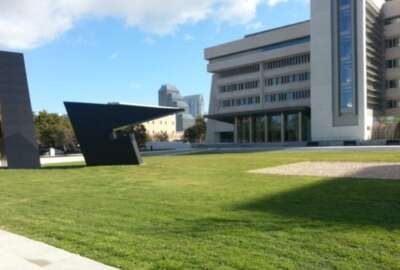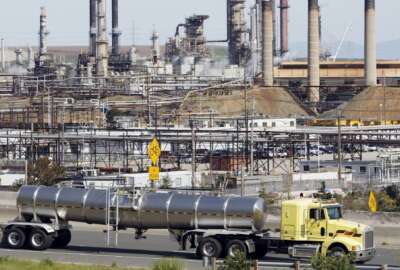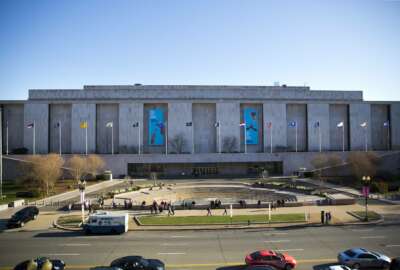

The new Federal Sustainability Plan released in December charges agencies to harness procurement authority to reach 100% carbon pollution-free energy at federal...
Most American adults are worried about global warming but less than half believe it will affect them personally, 2020 opinion data shows. Support for investing in renewable energy and limiting carbon dioxide emissions is rising, as is the belief that the president should do more to address global warming.
On both of these counts, the Biden administration is moving ahead with the directives of the “Climate-Related Financial Risk” executive order, released in May, in which the president called for a net-zero emissions economy by 2050 to help limit global average temperature rise to 1.5 degrees Celsius. The new Federal Sustainability Plan released in December charges agencies to harness procurement authority to reach 100% carbon pollution-free energy at federal facilities by 2030. It also calls for an entirely zero-emission vehicle fleet by 2035, and a net-zero emissions building portfolio by 2045. It also sets interim goals in the years leading up to those deadlines.
The Plan was released in conjunction with President Joe Biden’s “Executive Order on Catalyzing Clean Energy Industries and Jobs Through Federal Sustainability.” With this strategy, the Council on Environmental Quality in the Office of Management and Budget aims to scale up sustainability efforts and meet agencies where they are, according to Federal Chief Sustainability Officer Andrew Mayock.
“In places like zero emission vehicles, where the federal government has traditionally purchased under 1% of vehicles as zero-emission vehicles, we’re seeking to scale that up dramatically. And we’re seeking to also, of course, provide the infrastructure of charging that goes along with that,” he said Wednesday. “And so there’s places across those circles in the plan’s design, where we’re moving out today, so that we get to those periods of 2030, 2027, it’s a climb up a measured slope, versus a moment in time that we need to get to over one year.”
Mayock was speaking during the first in a series of virtual talks with sustainability and climate change experts, aimed at the federal community. Wednesday’s guest was Katharine Hayhoe, chief scientist for The Nature Conservancy and the Political Science endowed chair in Public Policy and Public Law at Texas Tech University.
Mayock said the Council on Environmental Quality asked agencies how far they could get on their own and how quickly. For some, 2027 was too long a deadline to transition their fleets, for example, and offered to plan for a 2024 or 2025 goal.
Hayhoe said she appreciated this tactic and asked Mayock, on behalf of the audience, both how federal employees could hold leadership accountable for executing climate change actions, and how employees can be more directly involved with the sustainability goals of the current administration.
He recommended finding out who the agency’s chief sustainability officer is — “It’s sometimes, and oftentimes, somebody who’s wearing a few hats” — and that over the past year he has seen a new enthusiasm for sustainability efforts. He added that having a player as big as the federal government set major procurement goals for zero-emissions technology and facilities will create an investment and incentive for those industries.
“When you have numerous corporate and public sector entities moving rapidly on the carbon-free electricity front, we’re creating a movement not only within the federal government. The federal government’s providing this huge signal to create that which will be very hard to reverse,” he said.
The Plan is divided into operating and enabling goals, the former including efforts such as net-zero emissions vehicle acquisitions by 2035 and a full net-zero emissions procurement by 2050. In this case, net zero is defined as reducing greenhouse gas emissions to as close to zero as possible, and balancing remaining emissions with an equivalent amount of emission removal, through natural carbon sinks, carbon capture and storage, direct air capture, or other methods.
Enabling goals are vaguer, and include steps such as identifying human capital requirements for effective implementation of the Plan, and incorporate sustainability and climate action into existing federal trainings. These goals are driven less by yearly deadlines and more so by systemic change. Mayock asked Katherine how society could move in this direction and away from a mindset of personal responsibility when it comes to tackling climate change. She paraphrased environmentalist Bill McKibben to say, “the most important thing an individual can do is not be such an individual,” and recognize that systems are made up of individuals each capable of demanding such change.
Hayhoe said opinion surveys conducted by the Yale University Program on Climate Change Communication indicate the lack of general concern for climate change in the U.S. is not an issue — 63% of American adults are worried about global warming. However, only 43% believe the consequences will affect them personally. This disconnect between urgency and efficacy can mean the difference between taking action at all and becoming complacent. The data also shows support for investing in renewable energy setting limits on CO2 pollutants, and for initiatives undertaken by corporations, state and local governments. It starts by openly talking about the problem and meeting people where they are, Hayhoe said.
“I was asked when I was in Iowa a little while ago, they said, ‘How do you talk about polar bears in Iowa?’ And I said, you don’t; you talk about corn. You don’t talk about what’s happening somewhere else, you talk about what’s happening where you live,” she said. “In Texas, I talked about cotton … In California, I talk about wildfires. Anywhere in the Pacific Northwest or the Northeast or the Midwest, you talk about floods. Big cities, we talk about our health and air pollution and extreme heat.”
Copyright © 2025 Federal News Network. All rights reserved. This website is not intended for users located within the European Economic Area.
Amelia Brust is a digital editor at Federal News Network.
Follow @abrustWFED



